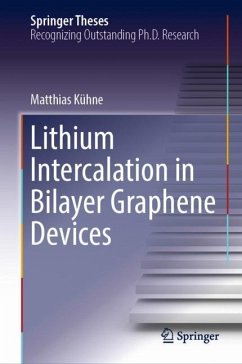This book reports on the successful implementation of an innovative, miniaturized galvanic cell that offers unprecedented control over and access to ionic transport. It represents a milestone in fundamental studies on the diffusive transport of lithium ions between two atomically thin layers of carbon (graphene), a highly relevant aspect in electrodes for energy and mass storage in the context of batteries. Further, it is a beautiful example of how interdisciplinary work that combines expertise from two very distinct fields can significantly advance science. Machinery and tools common in the study of low-dimensional systems in condensed matter physics are combined with methods routinely employed in electrochemistry to enable truly unique and powerful experiments.
The method developed here can easily be generalized and extended to other layered materials as well as other ionic species. Not only the method but also the outcome of its application to Li diffusion and intercalation in bilayer graphene is remarkable. A record chemical diffusion coefficient is demonstrated, exceeding even the diffusion of sodium chloride in water and surpassing any reported value of ion diffusion in single-phase mixed conducting materials. This finding may be indicative of the exceptional properties yet to be discovered in nanoscale derivatives of bulk insertion compounds.
The method developed here can easily be generalized and extended to other layered materials as well as other ionic species. Not only the method but also the outcome of its application to Li diffusion and intercalation in bilayer graphene is remarkable. A record chemical diffusion coefficient is demonstrated, exceeding even the diffusion of sodium chloride in water and surpassing any reported value of ion diffusion in single-phase mixed conducting materials. This finding may be indicative of the exceptional properties yet to be discovered in nanoscale derivatives of bulk insertion compounds.








